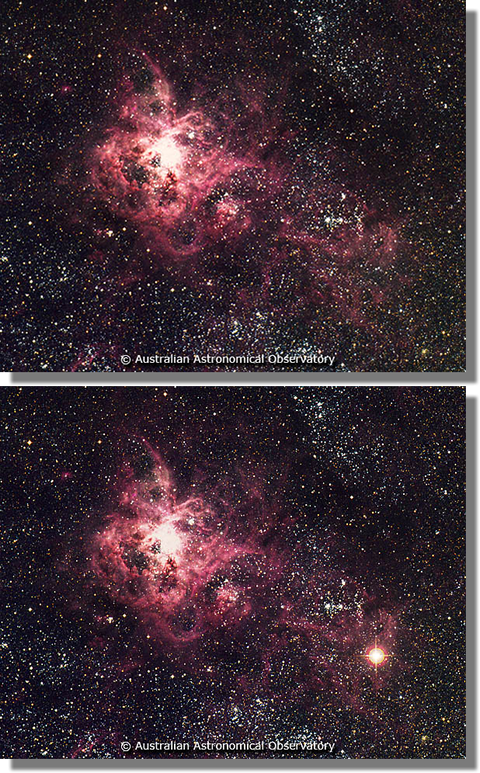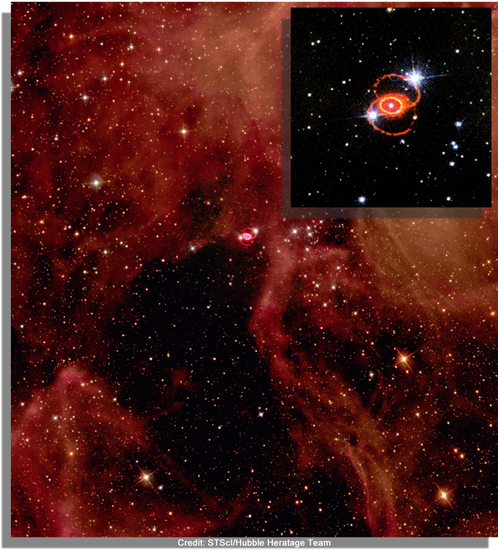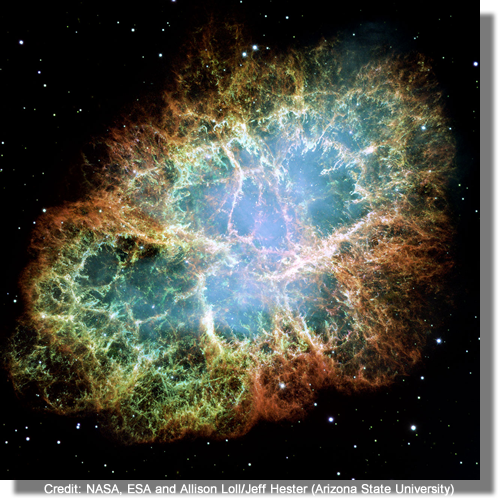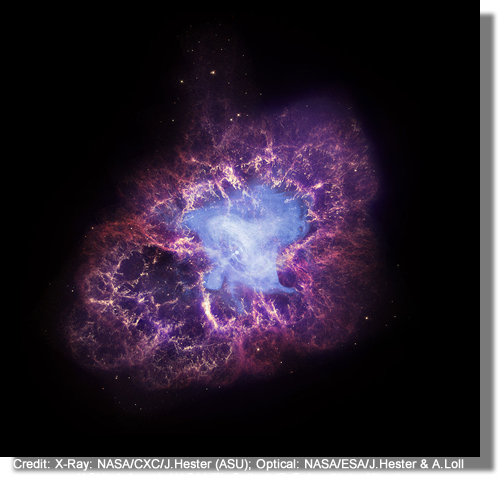Discover the Universe with the Big Sky Astronomy Club
"Not only is the Universe stranger than we imagine, it is stranger than we can imagine."
The Universe, in which we find ourselves residing, is an undeniably awe inspiring and amazing place:

From the unimaginable violence of a supernova explosion as a massive star ends its life. The most recent, nearby supernove is depicted here in before and after images of Supernova 1987a, which occured on February 23, 1987 in the Tarantula Nebula in the Large Magellenic Cloud...

To the brilliant shells of shocked gas lighting up as the ferocious blast of the explosion's shock wave crashes into it. Over thousands of years, the aging star had expelled many times the mass of our own Sun, forming a huge cloud surrounding the star. The ferocious blast wave of the supernova moved out at incredible speed (actually millions of miles per hour), eventually overtaking the dust and gas. Energized by the expanding shock wave, the previously expelled gas and dust heats to incredible temperatures, causing it to light up. In the images at right, the wide-angle view of these glowing shells was obtained by the Hubble Space Telescope in 1999, while the closeup inset was obtained in 1994, 12 years and 7 years, respectively after the explosion...
 To the bizzare stellar corpses that remain following the collapse and explosion of a massive star in a supernova such as SN1987a described above. Shown here is the rapidly expanding debris from a supernova that occurred in the year 1054 and whose appearance in the sky was recorded by Chinese astronomers - the Crab Nebula in the constellation Taurus. Buried at the center of this beautiful web of shocked material is the Crab Pulsar - a rapidly spinning (33 times per second!) neutron star. A neutron star is the remaining core of the original star that has collapsed on itself. The collapsed remnant contains most of the mass of the original star, but compressed into a ball about the size of a city - 8 to 10 miles in diameter. At these incredible densities and pressures, all of its original atomic material has been converted entirely into neutrons, one of the basic particles found in the nucleus of the atom. The neutrons in the stellar remnant are packed as tightly together as they can possibly be. This exotic and bizarre material is so dense, that a teaspoonful here on Earth would weigh more than 12 trillion pounds (about the same as 30 million modern 200-ton railroad locomotives)! The colorful debris that you see in this image consists of the star's original material - hydrogen, helium, oxygen, sodium, carbon and iron - as well as many newly synthesized, heavier elements such as nickel, gold, lead, arsenic and radium that were created during the cataclysmic moments of the explosion. All of this debris is being hurled out into interstellar space at fantastic speeds - up to 10 % the speed of light (67 million miles per hour)!
To the bizzare stellar corpses that remain following the collapse and explosion of a massive star in a supernova such as SN1987a described above. Shown here is the rapidly expanding debris from a supernova that occurred in the year 1054 and whose appearance in the sky was recorded by Chinese astronomers - the Crab Nebula in the constellation Taurus. Buried at the center of this beautiful web of shocked material is the Crab Pulsar - a rapidly spinning (33 times per second!) neutron star. A neutron star is the remaining core of the original star that has collapsed on itself. The collapsed remnant contains most of the mass of the original star, but compressed into a ball about the size of a city - 8 to 10 miles in diameter. At these incredible densities and pressures, all of its original atomic material has been converted entirely into neutrons, one of the basic particles found in the nucleus of the atom. The neutrons in the stellar remnant are packed as tightly together as they can possibly be. This exotic and bizarre material is so dense, that a teaspoonful here on Earth would weigh more than 12 trillion pounds (about the same as 30 million modern 200-ton railroad locomotives)! The colorful debris that you see in this image consists of the star's original material - hydrogen, helium, oxygen, sodium, carbon and iron - as well as many newly synthesized, heavier elements such as nickel, gold, lead, arsenic and radium that were created during the cataclysmic moments of the explosion. All of this debris is being hurled out into interstellar space at fantastic speeds - up to 10 % the speed of light (67 million miles per hour)!
Ultimately, this expelled debris is recycled in the formation of new stars, planetary systems and, at least in the case of the Earth, new life. This is what the famous astronomer Carl Sagan meant when he said that we humans are made of "star stuff"...

To the strange creature that lurks at the heart of the Crab Nebula. Although the resulting stellar remants of a supernova explosion have been referred to as "corpses", the remnant neutron star at the heart of the Crab Nebula, known as the Crab Pulsar, is anything but dead. In this multi-wavelength composit image, (optical from the HST, x-ray, in blue, from Chandra and infrared from Spitzer) the incredible amount of energy produced by the city-sized neutron star becomes evident. Neutron stars have the strongest, most concentrated magnetic fields of any single object in the universe. These intense magnetic fields focus elemenary particles in the stars vicinity into narrow, intense beams of radiation that are projected out from the star's magnetic poles at speeds nearing the speed of light. Because the star's magnetic axis and its rotational axes point in different directions, the radiation beam sweeps around like the light from a lighthouse. The Earth, as it turns out, just happens to lie in the path of the pulsar's sweeping beam. Consequently, every time the beam sweeps past us, we receive and can detect a pulse of energy, 33 times each second. Look closely at the center of the blue x-ray disk surrounding the star and you'll notice a jet of material eminating from the pulsar. That is the beam of engergetic particles that we are detecting...
